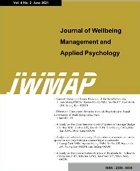- 권한신청
- E-ISSN2586-6036
- KCI
Performance Study on Odor Reduction of Indole/Skatole by Composite
Abstract
This study developed a dry composite module-type deodorization facility with Twisting airflow changes and two forms (catalyst, adsorbent) within one module. Experiments were conducted to evaluate the reduction efficiency of odor substances C<sub>8</sub>H<sub>7</sub>N and C<sub>9</sub>H<sub>9</sub>N. The device combines UV oxidation using TiO<sub>2</sub>, catalytic oxidation using MnO<sub>2</sub>, and adsorption using A/C in five different methods. Data analysis of experimental results utilized the statistical package program Python 3.12. The program applied frequency analysis of odor removal efficiency, one-way ANOVA, and post-hoc tests, with statistical significance determined by p-value to ensure reliability and validity of the measurements. Results indicated that the highest removal efficiency of C<sub>8</sub>H<sub>7</sub>N and C<sub>9</sub>H<sub>9</sub>N was achieved by the UV+A/C method, suggesting the superior effectiveness and efficiency of the developed device. Combining multiple processes and technologies within one module enhanced odor treatment efficiency compared to using a single method. The device's modularity allows for flexibility in adapting to various sewage treatment scenarios, offering easy maintenance and cost-effective deodorization. This composite reaction module device can apply multiple technologies, such as biofilters, plasma, activated carbon filters, UV-photocatalysis, and electromagnetic-chemical systems. However, this study focused on UV-photocatalysis, catalysts, and activated carbon filters. Ultimately, the research demonstrates the practical applicability of this innovative device in real sewage treatment operations, showing excellent reduction efficiency and effectiveness by integrating UV oxidation, TiO<sub>2</sub> photocatalysis, MnO<sub>2</sub> catalytic oxidation, and A/C adsorption within a modular system.
- keywords
- Indol/Skatole, UV Lamp, TiO2, MnO2, Activated Carbon, Composite Reaction Module Deodorization Facility, Twisting Airflow Design Device
- 다운로드 수
- 조회수
- 0KCI 피인용수
- 0WOS 피인용수















